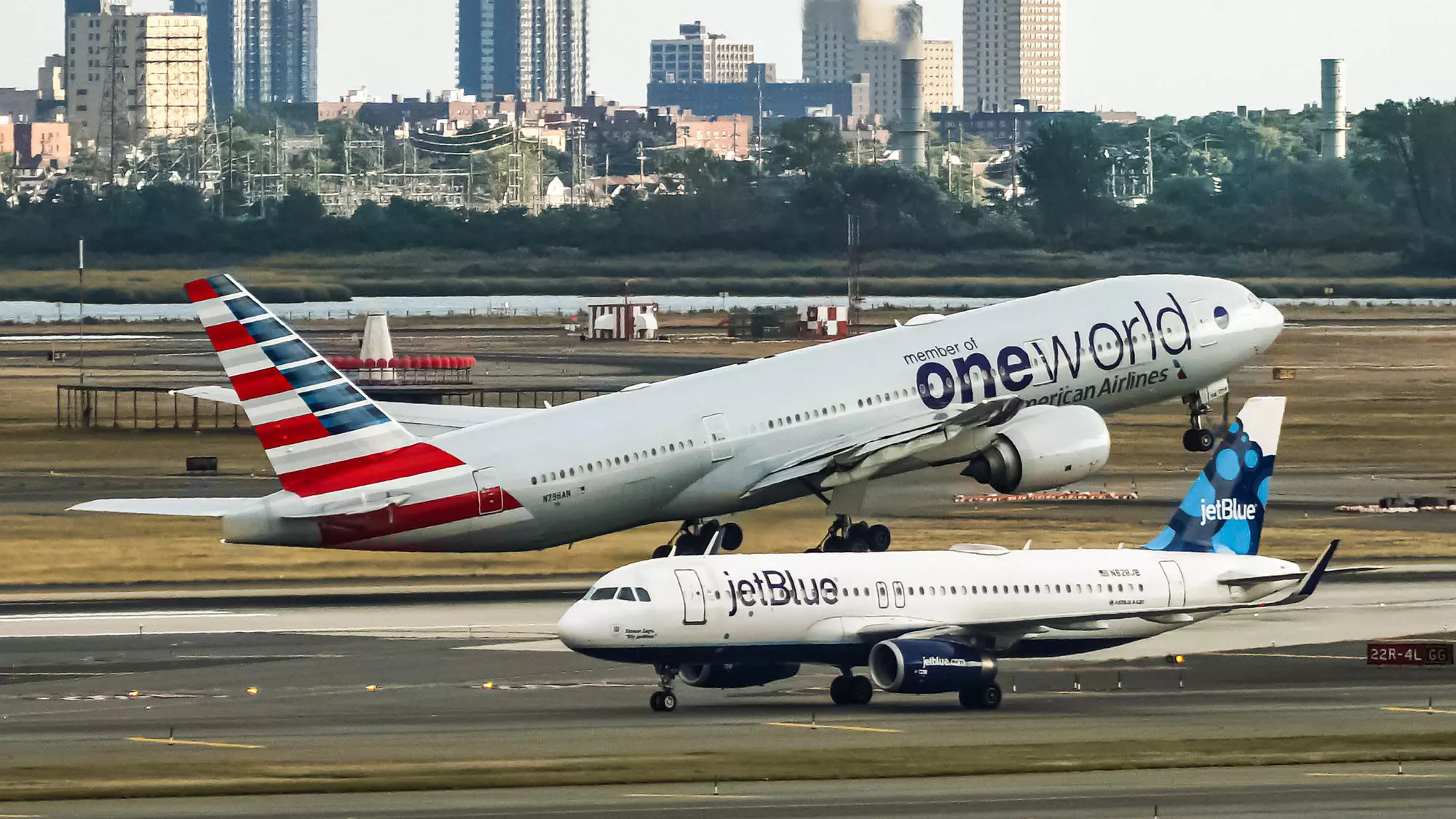American Airlines is making headlines with its recent legal action against JetBlue, seeking over $1 million tied to their previously shared operations under the Northeast Alliance (NEA). This lawsuit, lodged in a Texas Business Court, elucidates how quickly collaborative ventures can devolve into contentious disputes when faced with regulatory scrutiny. The NEA, initially perceived as an innovative partnership aimed at enhancing competitive advantage in key markets, has now become a battleground for financial reimbursements and strategic disjunction.
When the NEA was announced in July 2020, it presented a compelling vision for synergy, combining the strengths of both carriers in Boston and along major New York airport hubs. Yet, this partnership was always under a watchful eye, as antitrust concerns proved to be more than mere hypotheticals. The U.S. Department of Justice, along with various state actors, raised alarms about the partnership’s potential to stifle competition, culminating in a legal challenge that destroyed the mutual interests the airlines had once envisioned.
From Partnership to Litigation: A Rapid Decline
The unraveling of the NEA provides a stark reminder that in the high-stakes airline industry, fortunes can shift rapidly. By May 2023, a federal judge ruled that the NEA had violated the Sherman Antitrust Act, leading to its dissolution. In the aftermath, American Airlines is now pointing to unresolved financial obligations stemming from their revenue-sharing agreement known as the Mutual Growth Incentive Agreement (MGIA). This document was meant to ensure both airlines benefitted from the partnership’s success, but with JetBlue’s allegedly non-compliant behavior regarding payment calculations, the situation has morphed into a complicated legal dispute.
American Airlines claims that their invoices to JetBlue, covering a period starting in August 2022 through September 2023, reflect a reasonable attempt to settle mutual financial obligations. However, JetBlue’s own accounting revealed a discrepancy – a 6% difference in what each airline believes is owed. This divergence raises questions not just about the accuracy of each airline’s accounting practices, but also about the underlying health of their business relationship. When financial stakes are so high, trust must form the bedrock of operational collaboration, and that trust seems to have eroded considerably.
The Role of Strategic Decisions
In response to the breakdown of negotiations aimed at reestablishing their partnership, American Airlines’ vice chair and chief strategy officer, Steve Johnson, elucidated the complexities involved in forging a mutually beneficial arrangement. It’s a stark reminder of the balance that needs to be struck between operational efficiency, financial viability, and customer loyalty objectives. Johnson’s memo to employees hinted at the myriad of challenges that prevented the two airlines from rekindling their partnership vision. This scenario illustrates the intricate web of stakeholder interests that airline executives must navigate.
JetBlue’s leadership remains cautious, with CEO Joanna Geraghty attempting to downplay the turmoil surrounding the lawsuit. Their comments suggest a juxtaposition of intentions between the two companies—a desire from JetBlue to move forward realistically while American Airlines appears willing to escalate tensions through litigation. Not only does this lawsuit represent financial stakes, but it also symbolizes a profound lapse in the cooperative spirit that once characterized the airlines’ partnership.
A Broader Perspective on the Airline Industry
The dispute exemplifies broader trends within the airline industry, where alliances and collaborations have become both a necessity and a double-edged sword. As airlines compete for market share, they must also grapple with antitrust regulations that are intended to foster competition but often have the unintended consequence of stifling innovation. The NEA’s dissolution may serve as a cautionary tale, illustrating that even the most promising partnerships can collapse under scrutiny, despite initial optimism.
In navigating the complexities of modern air travel, airlines may find themselves at a crossroads—balancing competitive edge against regulatory compliance, all while managing the expectations of consumers who prioritize seamless travel experiences. As the story unfolds, it remains to be seen how this legal battle will influence the future landscape of airline partnerships and whether American Airlines and JetBlue can ultimately reconcile their differences or find a new path forward.

